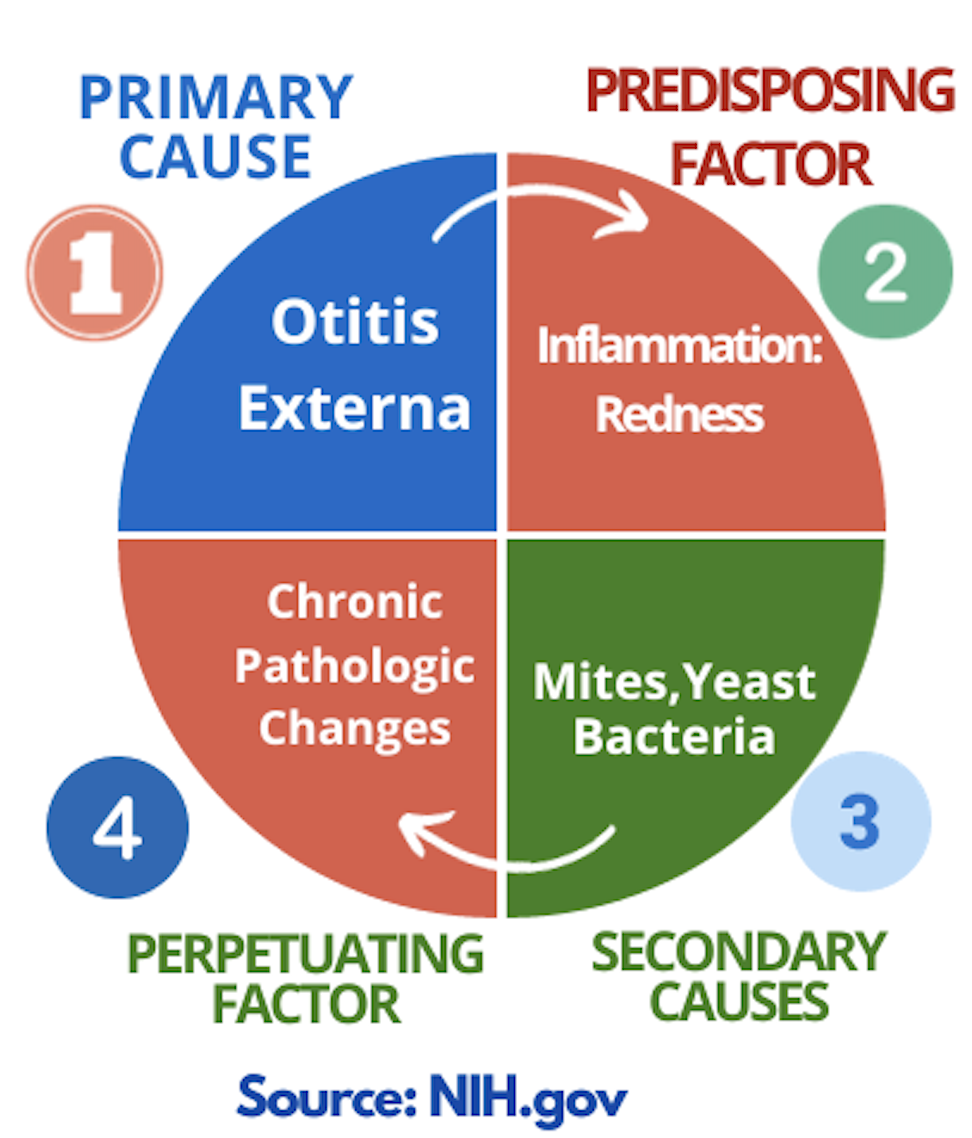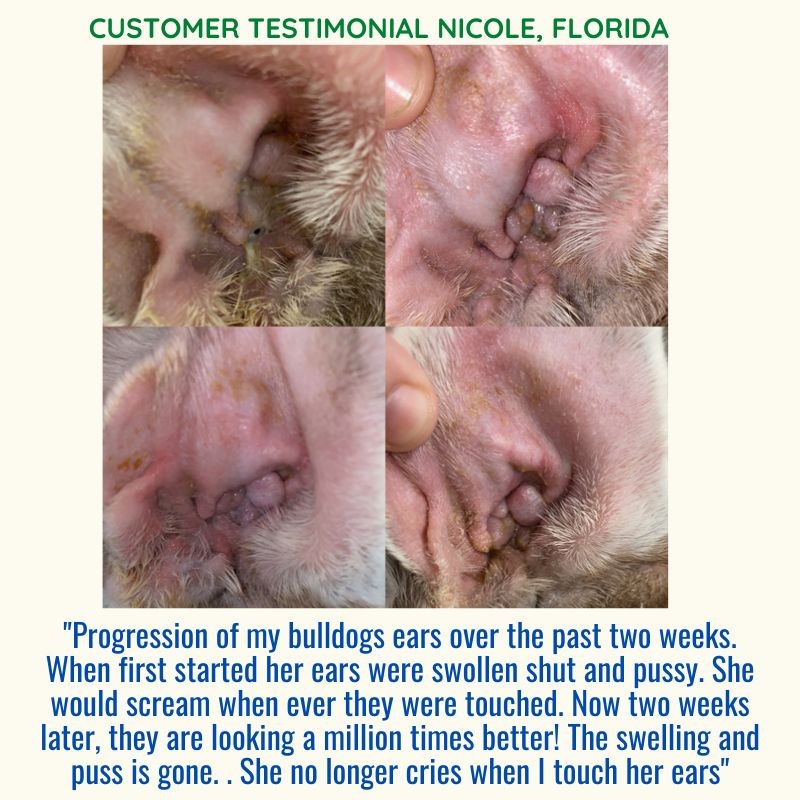
📊 PetGlow Ear Infection vs. Hydrocortisone — Full Comparison
What Do Customers Tell Us About This Product?
“Gentle Non-Sting solution for Cats”
"My Persian cat, Luna, is super sensitive to most medications, so I was thrilled to find Petglow’s gentle, plant-based ear infection treatment for cats. She had a persistent yeast infection in one ear—bad odor, head shaking, the whole deal. After just a few days of use, the symptoms were completely gone, and she’s back to her playful self. It’s easy to apply, safe for cats, and doesn’t sting at all. Highly recommend Petglow to any cat parent looking for a natural cat ear solution that actually works!"”
— Luna P. , Arizona
“My Max Loves it”
"I’ve tried countless dog ear infection remedies, but Petglow’s natural ear drops are in a league of their own! My golden retriever, Max, used to suffer from constant itching, foul-smelling discharge, and redness. Within 48 hours of using Petglow, the swelling went down and he stopped scratching entirely. I love that it's made with natural, non-toxic ingredients like olive leaf and chamomile. No Clinic visit needed, and no antibiotics—just fast, at-home relief. If your dog has chronic ear issues, Petglow is the best dog ear infection treatment I’ve found!"
— Jessica P, Dallas
Petglow Dog Infection medicine is gentle, Non-sting solution for both Dogs and Cats.
-
The Ear canal of Pets harbor bacteria, fungus, Yeast along with build up of regular dirt and wax and its very important to clean them regularly. Failure to clean leads to the itchiness and infections. Some Pets may not need regular cleaning as they may have cleaner ears for longer periods of time as over cleaning is also not recommended.
-
Mechanical cleaning using a soft cotton ball is the usually the recommended way to clean. Hold the ear flap upright & by gently squeezing the bottle for about 5sec, fill the ear canal with the solution. Gently massage the base of the ear with your fingers for about 25-30s.
-
IMPORTANT: Never use a Q-Tip as that may damage the ear canal.
The Petglow Difference.
Our product has been carefully formulated to address the broad spectrum of ear issues that pets often encounter. We have taken into account leading research conducted at NIH to create a product that is effective without any harmful side effects. The Pet ear is a complex environment containing various microbes, bacteria, yeast, and fungus, and our product has been designed to address all of these issues.
Petglow: The Intersection of Veterinary Science and Natural Formulations.
Petglow is the result of years of work, combining veterinary science and natural formulation expertise. Our team has conducted extensive research to ensure that all of our ingredients are safe and compatible for pets. We understand that pets have sensitive skin and a thinner epidermis layer, which is why we only use non-toxic ingredients that do not cause side effects when absorbed into their bloodstream unlike other products which cause issues when they get absorbed.
Take care of your Pet with our exclusive product

Types of Ear infection in Dogs
Petglow Ear medication for Dogs will treat Acute (Instant) and Chronic (Long term) Ear infections.
-
Otitis Externa- Hypersensitivity to the Ear Canal: Hypersensitivity to the Ear Canal by external stimuli like scratching, Alcohol, Chemicals etc. This is most important factor to consider for Ear Cleansing never to use ingredients such as Alcohol, EDTA, Hydrocortisone etc as this may ONLY Treat temporary Ear condition leading to Predisposing Factor 2.
-
Predisposing Factor: Ears with excessive hair, stenotic ears, increased cerumen production in the canals, otic masses, frequent ear cleaning.
-
Secondary Causes: Bacteria, Parasites, yeast are perpetuating factors. If infection travels deeper, this will lead to recurrent external ear infections.
-
Perpetuating Factor: Effective treatment includes treatment of Bacterial, Fungal, Yeast infection and Inflammatory changes as only treating one of Either will lead to other worsening condition and will make the infection Chronic (Long term).
The Root Causes of Dog Ear Infections
Bacterial Infections: Staphylococcus and Pseudomonas bacteria thrive in the warm, moist environment of the ear, leading to infections.
Yeast Overgrowth: Malassezia, a common yeast, can multiply in the ear canal, especially in dogs with allergies.
Foreign Objects: Debris, dirt, or foreign objects in the ear can create a breeding ground for infections.
Allergies: Environmental or food allergies can make a dog or cat more susceptible to ear infections.
Dog ear infections are common but highly treatable when detected early. Recognizing symptoms, understanding causes, and providing prompt ear infection medication for dogs can help prevent severe complications. With proper hygiene, and preventive care, you can ensure your dog enjoys a lifetime of healthy ears.
